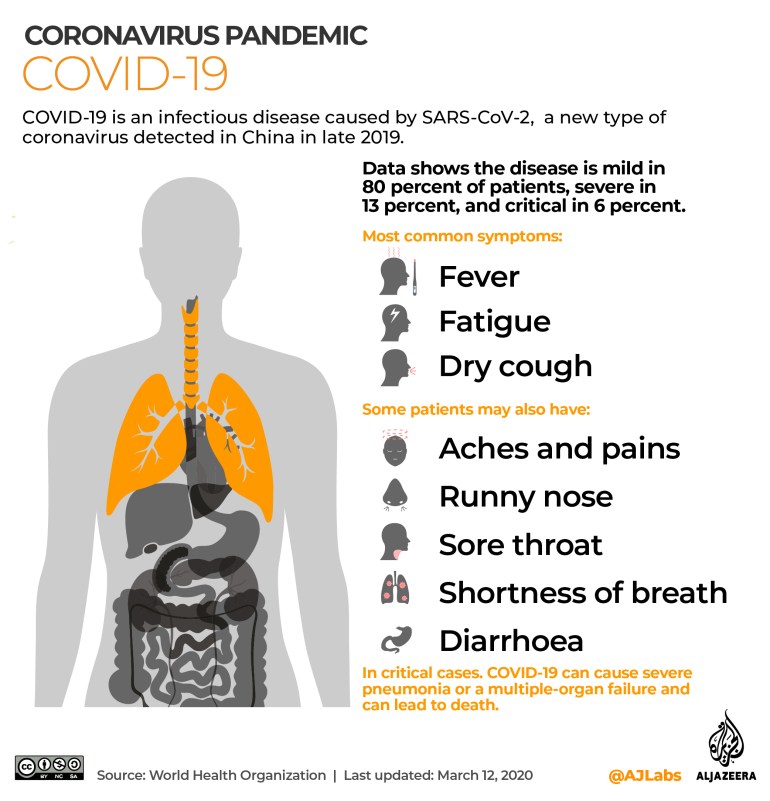New coronavirus variants are spreading across Europe and the United States as authorities recommend increased monitoring of the spread.
The variant, known as XEC, has infected 600 people in Europe and North America, just ahead of the northern hemisphere’s winter season, when respiratory illnesses are usually more prevalent.
This variant appears to spread more easily than previous types of coronavirus, but cases are not as severe as those seen at the peak of the pandemic.
So what is different about XEC and should we be concerned?
What are the new COVID XEC variants?
XEC is a “recombinant” version of SARS-CoV-2, the virus that caused the original COVID-19 pandemic.
When a person is infected with two different coronavirus strains at the same time, recombinants form. The genetic material from the two different strains is then “recombined” or “exchanged” with each other to create a third new strain.
Symptoms caused by XEC have so far been reported to be mild, but the new strain is part of the ‘Omicron’ lineage, a more severe variant of the coronavirus that peaked in 2022. .
Each variant, or strain, develops mutations that feature a different “spike protein” on the virus. These proteins bind to human cells and allow the virus to enter the body and begin replicating.
Over time, Omicron has developed its own derivative products and subvariants. Two of these (KP.3.3 and KS.1.1) were recombined to form XEC. They are closely related and have evolved from earlier JN.1 variants. It is also part of the Omicron lineage and was dominant around the world in early 2024.
Recombinant mutants are not new. XBB recombinant mutants accounted for the majority of coronavirus cases in 2023.
How will XEC become popular?
Like other coronavirus variants, XEC is primarily transmitted through respiratory droplets that become airborne when an infected person breathes, speaks, coughs or sneezes. Although the virus can survive on surfaces, transmission by this route is less common than with airborne viruses.
Public health officials are therefore advising people to practice social distancing, wear masks in public and use hand sanitizer.
However, it is believed that XEC may spread even more easily than previous coronavirus variants. This is because its special spike protein may allow it to enter cells and multiply more easily. The exact nature of its contagiousness is still being studied.

What are the symptoms of COVID XEC?
XEC can cause symptoms such as sore throat, fever, fatigue, and muscle pain. These are likely to be mild and appear 2 to 14 days after infection. Symptoms vary in severity. Symptoms may be more severe in people at high risk, such as older adults, or they may have no symptoms at all.
So far, XEC is not known to cause unique symptoms or more severe effects than other coronavirus variants.

When was the new strain detected?
XEC was first detected in August by researchers in Berlin, Germany, in samples of coronavirus infections collected two months earlier.
The sample collection in June was part of routine coronavirus surveillance, which involves sequencing and analyzing genetic material taken from nasal swabs from infected people.
It’s not clear why there was a two-month delay in detecting the variant, but in many cases the sequencing backlog was This may be the cause.
How did it become so widespread?
Since then, more than 600 cases have been reported in 27 countries in Europe and North America, according to a tracking study managed by the Global Initiative for Sharing All Influenza Data (GISAID). The organization is based in Munich and run by independent scientists from around the world.
More than a fifth (21%) of cases have been detected in France, where the infection is most prevalent. But it’s also gaining attention in the UK, Canada, Denmark, the Netherlands and Germany.
More than 100 cases have been reported in 25 states in the United States.
However, Bhanu Bhatnagar of the World Health Organization (WHO) Regional Office for Europe said that not all countries regularly report data to GISAID, so the true global spread of XEC is There is a possibility that it is even bigger.
How dangerous is XEC?
Evidence so far suggests that XEC is not fundamentally different or more dangerous than other Omicron variants.
Unlike some new variants in the past, such as JN.1, the WHO has not yet classified XEC as a “variant of interest.”
Like other respiratory viruses, COVID-19 and its variants are expected to become more prevalent during autumn and winter in the northern hemisphere as people spend more time indoors in close proximity to each other and with less ventilation. .
Mike Honey, a data visualization and data integration specialist based in Melbourne, said: Post to X He said he expected the variant to peak in late October or November, mainly in Europe and North America.
Additionally, early studies indicate that existing vaccinations are sufficient to protect against XEC variants.
The U.S. Centers for Disease Control and Prevention (CDC) recommends that people 6 months and older should use the most recent 2024-2025 vaccine to protect themselves from the virus, even if they have previously been vaccinated against COVID-19. We recommend that you receive the COVID-19 vaccine.
